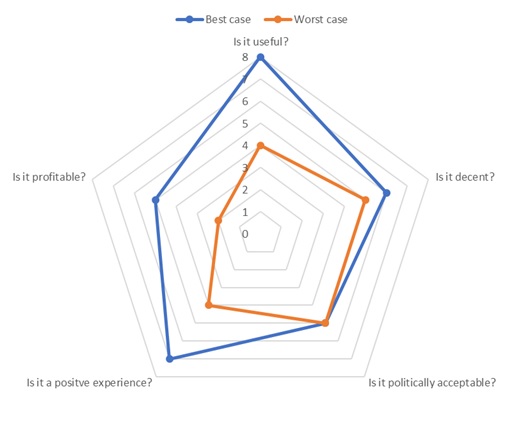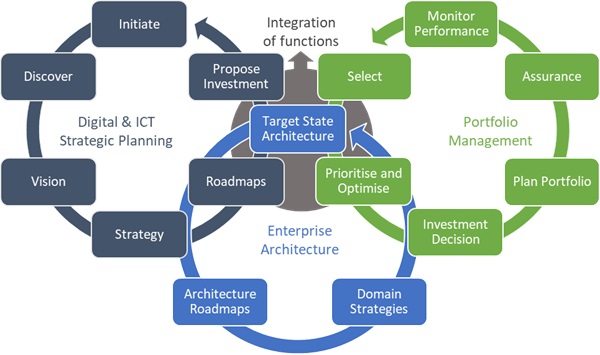Each option should be evaluated. The methods used to evaluate options will depend on the agency’s own investment lifecycle methodology or framework.
This guideline will cover two evaluation methods:
- Weighted options
- Public Value Scorecard
Practitioners should consider using workshops with stakeholders to evaluate strategic options. This will provide the opportunity to discuss and record the opinions or justification by key stakeholders as to which options are preferred or better.
Weighted options
This method involves identifying criteria against which options will be evaluated and selected. These criteria could be based on the business changes required, specific investment objectives, or the benefit statement. Selection criteria should address elements of attractiveness, achievability and affordability.
A percentage is then assigned to the criteria for each option based on the contribution each option will make to achieving or satisfying that selection criteria. See the table below for an example of a completed analysis.
Sample weighted options analysis
| Selection criteria | Do nothing | Option 1 | Option 2 | Option 3 |
|---|
| Criteria 1 |
Nil
|
Nil
|
50%
|
20%
|
|---|
| Criteria 2 |
100%
|
10%
|
Nil
|
10%
|
|---|
| Criteria 3 |
Nil
|
Nil
|
50%
|
20%
|
|---|
| Criteria 4 |
Nil
|
40%
|
Nil
|
10%
|
|---|
| Criteria 5 |
Nil
|
50%
|
Nil
|
50%
|
|---|
| Total |
100%
|
100%
|
100%
|
100%
|
|---|
When using any method of weighting or ranking, practitioners must supply the evidence or justification for rating an option. This should include data based on research and, in some cases, may include the reasoning, opinions or themes identified during stakeholder engagement.
Information to substantiate the weighting may include but is not limited to:
- current actual or projected service delivery costs
- whole of life cost estimates based on a conceptual design, similar projects conducted in the past, cost benchmarks or similar project costs in other agencies or other jurisdictions
- evidence of whole-of-life costs, unit costs or improved performance based on industry models and patterns.
- evidence of improved performance identified through research.
- market research into product or service offerings.
The extent to which a solution is expected to be offset by revenue should also be considered. Any costs are indicative only as not all of the strategic options may have been identified. The analysis of the options may need to be revised following further investigation of the whole-of-life-costs.
Public value scorecard
This method is more subjective and involves overlaying the results of conversations with diverse groups of stakeholders on a graph regarding the merits of each option. Though this method is subjective, it does take into consideration the opinions of different stakeholder groups when broad consultation is undertaken.
There are 5 criteria used in the scorecard:
- Is it useful?
- Is it decent?
- Is it politically acceptable?
- Is it a positive experience?
- Is it profitable?
An example scorecard diagram is provided below.
Public value scorecard example

Best and worst case scenarios should both be included. A separate graph should be produced for each option so the relative merits of each can be compared according to different stakeholder groups.
As with weighted options analysis, it is important to supply the evidence or justification for selecting an option. This is likely to include the reasoning, opinions or themes identified during stakeholder engagement.




